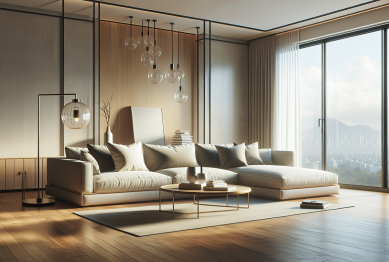In a culture that praises boundless options, constant access, and infinite flexibility, the word “constraint” may sound restrictive. But a growing body of research—and a rising wave of lifestyle thinkers—suggests otherwise. In fact, learning how to use constraints to create freedom is emerging as one of the most effective strategies for achieving clarity, creativity, and personal balance in a distracted world.
Rather than limiting possibility, intentional boundaries offer direction. Whether it’s a time limit on screen use, a cap on daily decisions, or a simplified routine, constraints are being redefined not as rules—but as frameworks for focus. In an era overloaded with choices, it turns out that less structure leads to less clarity, not more.
Let’s explore how this trend is reshaping productivity and wellness, and how you can use constraints to unlock deeper freedom in everyday life.

Why Boundaries Are Becoming a Wellness Trend
Minimalism. Digital detoxing. Capsule wardrobes. Intermittent fasting. Time-blocking. What do these all have in common? They rely on voluntary constraints—a deliberate narrowing of options to reduce noise and improve quality of life.
According to a 2024 report by McKinsey & Company, digital fatigue and decision overwhelm have become leading contributors to burnout, especially among millennials and Gen Z. The paradox? People want autonomy, but unlimited freedom often creates paralysis.
As productivity expert Cal Newport explains in his book Deep Work, constraints allow for depth. By limiting inputs, we reclaim the ability to focus, create, and reflect without distraction.
The Science Behind Productive Constraints
Why does narrowing options enhance performance? The answer lies in how our brains manage complexity.
-
Cognitive load theory suggests that working memory has a limited capacity. Constraints reduce the number of simultaneous choices, helping the brain conserve energy for problem-solving and creativity.
-
Choice overload (as defined by psychologist Barry Schwartz) leads to dissatisfaction and regret. People are more likely to take meaningful action when presented with fewer, well-defined paths.
-
Behavioral activation, a strategy used in mental health treatment, shows that limited, structured tasks are more motivating than open-ended goals. This supports the use of small, defined constraints to build momentum.
Where Constraints Create Freedom
Let’s look at modern applications of this mindset across different areas of life:
1. Time: Fewer Hours, Greater Output
Remote professionals and digital creators are increasingly embracing fixed schedules. Instead of chasing longer hours, they cap work time to maintain quality.
-
Use a timer to limit focused work to 90-minute blocks.
-
Cap meetings to two per day, leaving room for deep tasks.
-
Adopt a “shutdown ritual” that ends your workday at a specific hour, no matter what’s left.
These limits don’t hinder progress—they sharpen it.
2. Space: Designing With Less
In home organization and interior design, constraint-based aesthetics like Scandinavian or Japanese minimalism are growing in popularity. These styles aren’t about deprivation—they promote peace and spaciousness by intentionally reducing clutter.
Try:
-
A one-in, one-out policy for new purchases
-
Designing rooms with negative space to create calm
-
Setting physical boundaries for tech use (e.g., phones stay out of the bedroom)
3. Information: Digital Boundaries for Clarity
Unlimited access to content has made our attention fragmented. More people are now using content constraints to protect mental clarity.
Strategies include:
-
Limiting email checks to two specific times per day
-
Following only essential accounts on social media
-
Using apps like Freedom or Cold Turkey to block distracting websites
By reducing digital input, we make more room for original thought.
4. Health and Diet: Simplicity in Structure
Constraint-based eating patterns like intermittent fasting, set meal windows, or restricted ingredient plans are increasingly popular. These methods aren’t just about weight—they reduce decision fatigue and promote discipline.
Other health-related constraints:
-
Setting a nightly tech curfew for better sleep
-
Using a standing desk for defined work intervals
-
Establishing fixed walking or movement times during the day
5. Creativity: Boundaries Fuel Innovation
Artists, writers, and designers have long known the power of limitations. The blank page is often more paralyzing than a prompt. By imposing rules—word counts, time limits, or stylistic guidelines—creators often find more freedom to experiment.
Modern examples:
-
Writers using the Pomodoro technique to constrain output bursts
-
Musicians limiting themselves to one instrument per track
-
Designers using only black-and-white palettes to force stronger compositions
Constraints strip away the unnecessary, allowing the essential to emerge.
How to Create Healthy Constraints in Your Life
If you’re unsure where to begin, start small. Effective constraints aren’t punitive—they’re designed to support your goals. Here’s a practical roadmap:
1. Identify Areas of Overwhelm
Where do you feel scattered or indecisive? Email? Meals? Work hours? This is your starting point.
2. Choose One Constraint
Pick a single rule or boundary to apply. Examples:
-
No social media after 8pm
-
Only three top priorities per day
-
A fixed morning routine that never changes
3. Track the Results
Constraints should reduce friction, not increase it. Journal or reflect weekly on what’s working and what isn’t.
4. Adjust and Expand
Once a constraint becomes second nature, introduce another. This builds a system of supportive limits that function like guide rails.
The Constraint-Freedom Feedback Loop
Here’s the truth: freedom without form often leads to chaos. But when used wisely, constraints create clarity—and clarity leads to freedom. This is especially relevant in today’s always-on world, where the absence of limits can lead to burnout, distraction, and decision fatigue.
By adopting structured boundaries:
-
You reduce mental clutter
-
You define success more clearly
-
You create space for deep rest and intentional effort
This loop becomes self-sustaining. The more clarity you have, the more confidently you can move through life—without feeling scattered or reactive.
Cultural Shift: From Optimization to Intention
We’re seeing a larger trend away from maximizing everything and toward intentional living. People are questioning hustle culture, reevaluating tech use, and redefining what “freedom” really means.
As Arianna Huffington wrote in a 2023 editorial for Thrive Global, “Boundaries aren’t the end of freedom. They’re how we reclaim it.” In a digital world where everything demands our attention, intentional constraint may be the most radical act of clarity.
Conclusion
Constraints don’t fence us in—they focus us. Whether you’re designing your schedule, your space, or your screen time, boundaries provide the structure needed to make meaningful choices.
If freedom feels overwhelming, the answer might not be to expand your options—but to reduce them, intentionally. In doing so, you create space to act with purpose, think with clarity, and live with greater peace.
References
- McKinsey & Company (2024) – From Stress to Rest: Strategies to Prevent Burnout
Discusses how burnout stems from chronic stress and offers methods to build resilience and restore mental clarity. – mckinsey.com - Cal Newport (2016) – Deep Work: The Secret to Achieving Peak Productivity (Inc. guide version)
Provides an actionable summary of Deep Work strategies for sustained focus and deeper engagement.
todoist.com - Barry Schwartz (2004) – The Paradox of Choice: Why More Is Less (Wikipedia page)
Explains how excessive choices can harm decision-making and well-being. en.wikipedia.org









